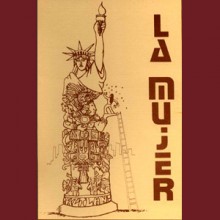This is part of a longer blog series, which you can find links to the previous as well as the next blog posts at the bottom of this blog.
For those of us that are not too familiar with how we major or minor in Chicana/o Studies at Loyola Marymount University, let me inform you that aside from taking a particular amount of required classes, we must also complete a capstone project which is an independent research project one is required to do as final piece for our undergraduate degree.
As a recently declared Chicana/o Studies minor, after figuring out what the focus for my capstone project was going to be, the birth of the Chicana/o Studies department, I was given the option to opt out of the traditional 25 page thesis I’m suppose to produce and instead embrace the social media my class was participating in. I decided to turn my capstone into a blog series because of it accessibility and the opportunity for intertextuality it carried with it.
In our current society, we are the children of technology, with the possibility of having the internet at our fingertips thus access to information is as simple as snapping our fingers. I found that blogging my findings brought a sense of urgency to my topic given the current uproar around the ethnic studies programs around the nation. I felt my project was reminding the LMU population of the value behind the department. And when this is put out to the public with the use of the internet, it provides some evidence for those departments that need support or answers to those who question the importance of ethnic studies programs. This opportunity to access my paper outside of the department walls was a huge motive to blog.
Also with blogging my capstone project it gave a new dimension to the project that a 25 page paper would never get. It allows for links to be placed within the text as well as tags to bring similar topics to it. This idea of intertextuality gives the reader the opportunity to fill in gaps as they read without doing extra work in looking at footnotes, bibliographies or the likes. Plus with the tags associated with the blogs it gives a diverse audience the opportunity to come across it and run into it when searching for similar things. This new dimension opens the accessibility of it and breaks barriers of understanding since questionable language can be defined by just clicking on it.
Blogging my capstone project allowed itself to be accessible to anyone with internet connection and gives it a new dimension as links and tags bring extra information and a greater audience to it. Hopefully more projects start turning towards this venue in the near future.
Picture: http://en.wikipedia.org/wiki/Desktop_computer
Read more:
The Birth of the Chicana/o Studies Department, Setting the Stage, Students Propose a New Program, From Chicano Studies Department to Mexican- American Studies Degree Program, So You Want to Take Introduction to Chicana/o Studies?, So Let’s Put Some of the Pieces Together
